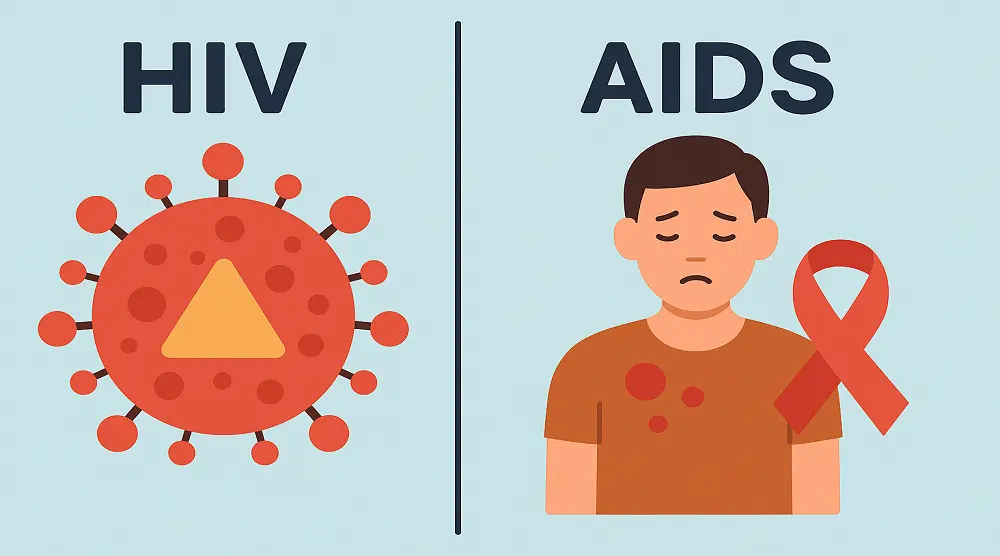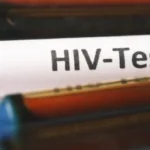Imagine hearing the words, “You have HIV.”
For Dave Miller, now Chair of the Canadian AIDS Society, that moment marked the beginning of a journey he once thought impossible to navigate. Today, thanks to breakthroughs in treatment and awareness, living with HIV is no longer the life sentence it was once feared to be.
But what truly distinguishes HIV from AIDS? These terms are often used interchangeably, yet they represent different stages of the same condition.
In this article, we’ll explore the key differences, how HIV progresses to AIDS, and the transformative treatments that have given hope to millions.
What is HIV?
HIV, or human immunodeficiency virus, is a virus that attacks your immune system, specifically targeting CD4 cells (commonly referred to as T cells). These cells are essential for fighting infections, and as HIV destroys them, your immune system becomes progressively weaker. Without treatment, this compromised immunity makes your body more vulnerable to other infections and diseases.
How is HIV transmitted?
HIV is spread through the exchange of certain bodily fluids, including:
- Blood
- Semen
- Vaginal and rectal fluids
- Breast milk
The most common ways HIV is transmitted include:
- Unprotected vaginal and anal intercourse, as the virus enters the body via contact with infected bodily fluids or small tears in the mucous membrane
- Using shared needles, syringes, or other injection equipment with someone who has HIV, particularly among those who use intravenous drugs
- Mother-to-child transmission during pregnancy, childbirth, or breastfeeding
HIV cannot be transmitted through casual contact, such as:
- Hugging
- Shaking hands
- Sharing utensils
What is AIDS?
AIDS, or acquired immunodeficiency syndrome,represents the most advanced stage of HIV infection. At this point, the virus has caused severe damage to your immune system, leaving your body highly vulnerable to infections and illnesses it would normally be able to fight off.
AIDS is diagnosed when:
- YourCD4 cell count falls below 200 cells/mm³ (a normal range is 500–1,600 cells/mm³), or
- You develop one or more opportunistic infections or cancers that rarely affect individuals with healthy immune systems.
Common symptoms of AIDS
When HIV progresses to AIDS, it can cause a range of severe symptoms that can significantly impair your quality of life, including:
- Rapid weight loss
- Recurring fever or profuse night sweats
- Extreme fatigue or persistent weakness
- Prolonged swelling of the lymph glands (e.g., in the neck, armpits, or groin)
- Chronic diarrhea
- Skin rashes or lesions
- Frequent or severe infections that take longer to recover from
How does HIV differ from AIDS?
HIV is the virus that initially attacks the immune system, particularly the CD4 cells, which leads to their gradual depletion. On the other hand, AIDS represents the most advanced stage of HIV infection, characterized by a critically weakened immune system.
The distinction lies in the progression: while HIV infection may not necessarily advance to AIDS, AIDS marks a severe condition where the body is highly susceptible to opportunistic infections and diseases due to the significant loss of immune function.
Essentially, while HIV is the cause, AIDS is the effect, which signifies the virus’s profound impact on your immune system.
What are the stages of HIV infection?
The progression of HIV infection unfolds through three distinct stages:
1. Acute HIV infection
Acute HIV infection manifests shortly after exposure, characterized by symptoms similar to the flu. This stage features rapid virus replication and an initial immune response, which leads to symptoms such as:
- Fever
- Fatigue
- Swollen lymph nodes
2.Chronic HIV infection
The chronic HIV infection stage isalso referred to as the asymptomatic phase. Here, the virus remains active but reproduces at lower levels. Many individuals experience no symptoms during this time, though they can still transmit the virus to others.
With proper treatment, this stage can be prolonged, and the progression to the last stage can be prevented.
1. AIDS
The progression to AIDS marks the most advanced stage of HIV infection. It is characterized by a significantly compromised immune system, evidenced by a CD4 cell count falling below 200 cells/mm³ or the presence of certain opportunistic infections or cancers.

How is HIV diagnosed?
HIV diagnosis is critical for early intervention and management of the virus. It is achieved through specific tests designed to detect either the virus itself or the body’s response to it.
The main types of tests include:
Antibody/antigen tests
Antibody/antigen tests efficiently detect the presence of HIV antibodies, which are the body’s response to the virus, as well as HIV antigens, like the p24 antigen, that appear shortly after infection. This method allows for a reliable diagnosis within weeks of potential exposure.
Nucleic acid tests (NAT)
Nucleic acid tests delve deeper by directly detecting HIV’s genetic material, RNA, in the bloodstream. Ideal for early detection, NATs can identify HIV presence before the immune system has had a chance to produce antibodies against the virus.
These diagnostic criteria are crucial for healthcare providers to identify AIDS, marking a critical juncture that necessitates enhanced treatment and management strategies.
How is HIV cured?
Currently, no cure exists for either HIV or AIDS. However, advancements in medical treatments have revolutionized the management of HIV.
The primary treatment for HIV is antiretroviral therapy (ART), a daily regimen of medicines that reduces the viral load, preserves the immune system, and lowers the
risk of transmission. While not a cure, ART significantly extends the lifespan and improves the quality of life for those with HIV.
For potential HIV exposure, post-exposure prophylaxis (PEP) can prevent infection if started within 72 hours. PEP involves a 28-day course of antiretroviral medicines and is most effective when initiated promptly after exposure.
Together, ART and PEP, combined with regular medical care and monitoring, are key to effectively managing and preventing HIV.
How is HIV prevented?
HIV transmission can be effectively prevented through a combination of strategies, such as:
- Using condoms correctly during sex
- Taking pre-exposure prophylaxis (PrEP) for high-risk individuals
- Avoiding needle sharing
- Undergoing treatment as prevention (TasP) for HIV-positive individuals
Key takeaway
The bottom line is that HIV is no longer automatically a life sentence, and AIDS can indeed be largely preventable with advancements like antiretroviral therapy. However, the fight goes beyond treatment—it’s about creating a society that destigmatizes HIV and AIDS, empowering individuals to seek care without fear, just as Dave Miller did.
Make HIV testing part of your healthcare routine. Order your HIV test kit from our shop today.




















































